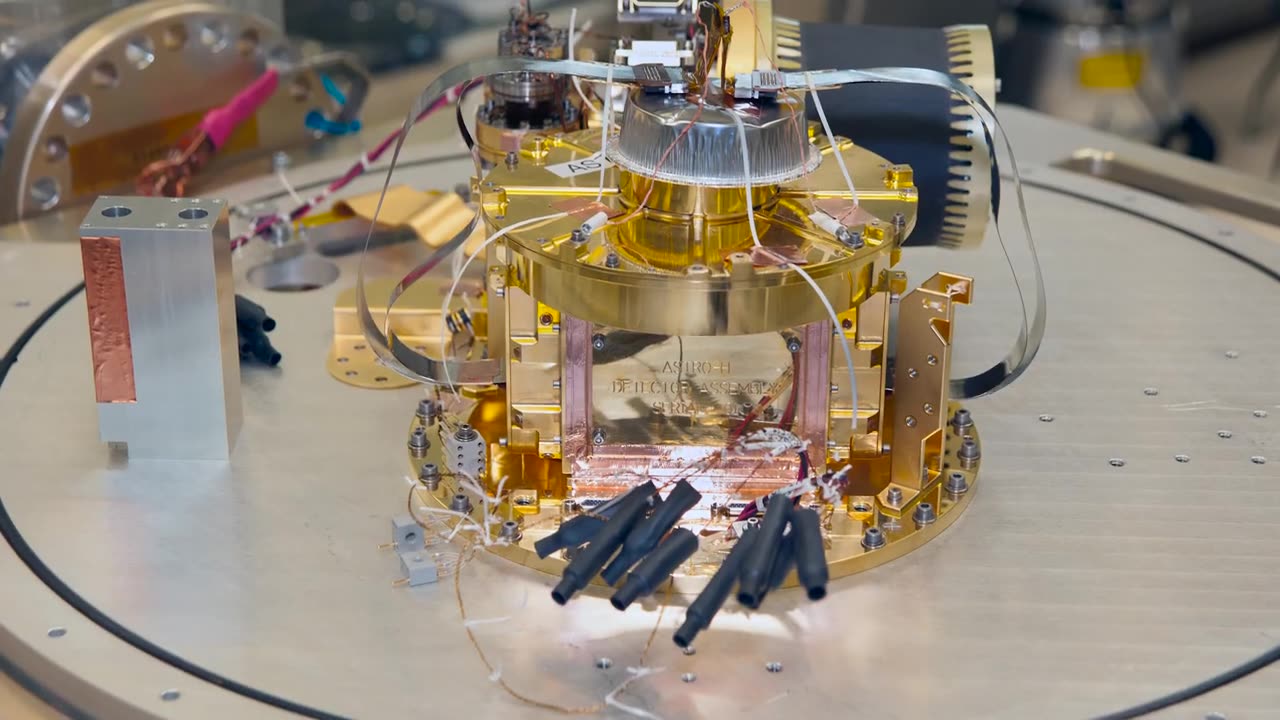Premium Only Content

XRISM Exploring the Hidden X-ray Cosmos
Watch this video to learn more about XRISM (X-ray Imaging and Spectroscopy Mission), a collaboration between JAXA (Japan Aerospace Exploration Agency) and NASA.
Credit: NASA's Goddard Space Flight Center
Music Credits: Universal Production Music
Lights On by Hugh Robert Edwin Wilkinson
Dreams by Jez Fox and Rohan Jones
Changing Tide by Rob Manning
Wandering Imagination by Joel Goodman
In Unison by Samuel Sim
A powerful satellite called XRISM (X-ray Imaging and Spectroscopy Mission) is set to provide astronomers with a revolutionary look at the X-ray sky.
XRISM is led by JAXA (Japan Aerospace Exploration Agency) in collaboration with NASA and with contributions from ESA (European Space Agency).
XRISM detects X-rays with energies ranging from 400 to 12,000 electron volts. (For comparison, the energy of visible light is 2 to 3 electron volts.)
This range will provide astrophysicists with new information about some of the universe’s hottest regions, largest structures, and objects with the strongest gravity.
The mission has two instruments, Resolve and Xtend.
Resolve is a microcalorimeter spectrometer developed in collaboration between JAXA and NASA. When an X-ray hits Resolve’s 6-by-6-pixel detector, its energy causes a tiny increase in temperature. By measuring each individual X-ray’s energy, the instrument provides information about the source, such as its composition, motion, and physical state.
To detect these tiny temperature changes, Resolve must operate at just a fraction of a degree above absolute zero. It reaches this state in orbit after a multistage mechanical cooling process inside a refrigerator-sized container of liquid helium.
XRISM’s second instrument, Xtend, was developed by JAXA. It will give XRISM one of the largest fields of view of any X-ray imaging satellite flown to date, observing an area about 60% larger than the average apparent size of the full moon. The images it collects will complement the data collected by Resolve.
Each instrument is at the focus of an XMA (X-ray Mirror Assembly) designed and developed at Goddard.
X-ray wavelengths are so short, they can pass straight between the atoms of the dish-shaped mirrors used to capture visible, infrared, and ultraviolet light.
Instead, X-ray astronomers use nested curved mirrors turned on their sides. The X-rays skip off the surfaces like stones across a pond and into the detectors.
Each of XRISM’s XMAs houses hundreds of concentric, precisely shaped aluminum shells built in quadrants and assembled into a circle. In all, there are over 3,200 individual mirror segments in the two mirror assemblies.
After launch, XRISM will begin a months-long calibration phase, during which Resolve will reach its operating temperature.
-
 2:05:19
2:05:19
Damysus Gaming
5 hours agoARC Raiders - SERVER SLAM TIME!!!! LFG!!!
25.1K -
 1:04:10
1:04:10
The Connect: With Johnny Mitchell
8 hours ago $3.33 earnedTucker Carlson's INSANE Take On Civil War In America, Calls For Fascism
18.6K39 -
 2:35:14
2:35:14
DLDAfterDark
6 hours ago $3.30 earnedThe Return of Marine Gun Builder? MGB, DLD, BDG&G After Hours Armory
20.9K3 -
 28:39
28:39
Afshin Rattansi's Going Underground
1 day agoDonald Trump’s Gaza Peace Plan: A Pivotal Moment or Farce? (Palestinian Deputy Foreign Minister)
27.4K6 -
 3:31:29
3:31:29
SavageJayGatsby
7 hours ago🔥 Spicy Saturday – Let's Play: Prison Life 2🔥
45K2 -
 4:34:18
4:34:18
cosmicvandenim
14 hours agoCOSMIC VAN DENIM | WARZONE HORROR
18.8K1 -
 29:09
29:09
Stephen Gardner
11 hours ago🚨Trump DECLARES WAR on TERRORIST LEFT!
31.3K61 -
 4:16:00
4:16:00
NellieBean
6 hours ago🔴 Lost Girl looks for Lost Village
9.48K -
 30:07
30:07
JohnXSantos
1 day ago $1.02 earnedWhy Clothing Brands NEVER Fail- Master Class
8.53K -
 4:08:42
4:08:42
Spartan
5 hours agoOMiT Spartan | God of War Ragnarok, College Halo match @ 9:30 EST, then ranked or more GoW:R
4.82K